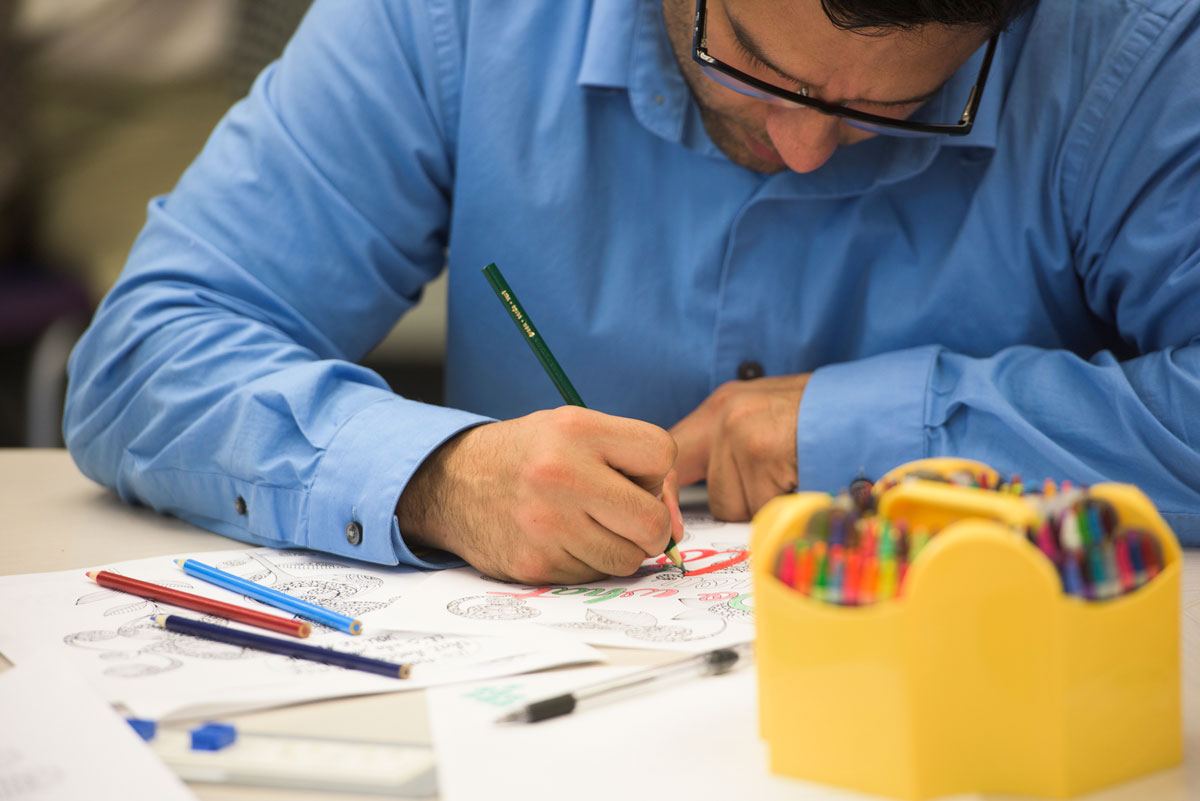Long before adult coloring books started topping Amazon’s list of bestselling books, Misty Ginicola was using them with her graduate students and with clients in her private therapy practice.
Ginicola, a licensed professional counselor and associate professor of counseling and school psychology at Southern, says mental health professionals can use coloring books in a clinical setting to reduce anxiety or build rapport with clients.
But she also encourages her students – made up mostly of current and future school psychologists, counselors and therapists — to turn to this favorite childhood pastime as a way to deal with the high-stress nature of their jobs.
“They work with a lot of clients with really hard situations. They’re exposed to lots of trauma,” Ginicola said. Coloring, she added, “is something that’s so healing and so easy to do” not only with clients, but at home as a way for therapists to take better care of themselves.
Since coloring requires repetition and focus, it keeps people centered and helps them relax, she said.
“It’s a really nice coping skill and it’s something that has gotten lots of attention in the helping professions,” Ginicola said. “I’m glad to see that it’s becoming so popular.”
A staple in households with preschoolers and toddlers for generations, coloring books are now being marketed to adults as a way to unwind and unplug – an escape from a stressed-out culture obsessed with multitasking and 24/7 electronic connectivity.
Six of the Top 20 books sold on Amazon so far in 2016 are coloring books geared toward adults, bearing titles like “Secret Garden: An Inky Treasure Hunt and Coloring Book” and “Adult Coloring Book: Stress Relieving Animal Designs.”
As they continue to grow in popularity, the books are also being sold in checkout lines at supermarkets like Stop and Shop and Whole Foods.

Ginicola said there are now adult coloring books available to match anyone’s tastes and interests. One of her favorites to use with clients is a book that features encouraging words and inspirational phrases.
Also popular are books featuring mandalas, a symbol representing the universe in Eastern religions. She said coloring mandalas has been shown to have a calming effect and promote mindfulness, the art of being present in the moment.
For those who prefer a slightly edgier way to blow off steam, she said, there are even coloring books that feature swear words adorned with intricate floral patterns or geometric designs.
Most books come with fine-point colored pencils, the implement of choice for grown-up coloring because the patterns are usually too detailed for crayons or markers.
“Therapists have used these for a really long time. But now there are so many more choices,” Ginicola said. “You can really tailor the experience to your personality or the personality of your client.”
Ginicola also promotes, through an online support group she coordinates for new mothers, the benefits of coloring as an outlet for moms struggling to adjust to the demands of their new role.
Research has long proven the benefits of art as a form of therapy. But the beauty of coloring, Ginicola said, is almost anyone can do it, unlike traditional art therapy, which requires some artistic ability and should only be administered by a trained professional.
“Coloring doesn’t need that,” she said. “You just have to make the time for it.”


